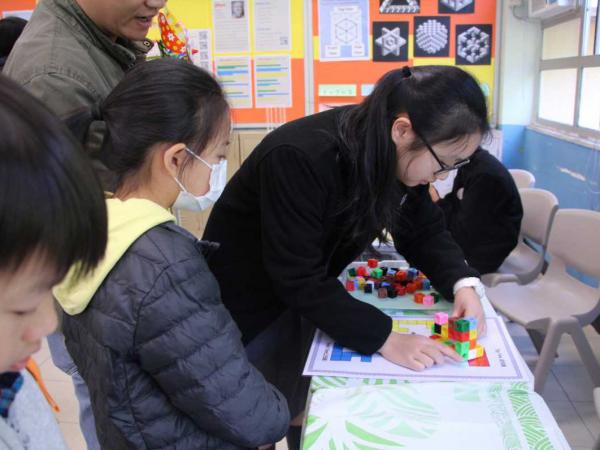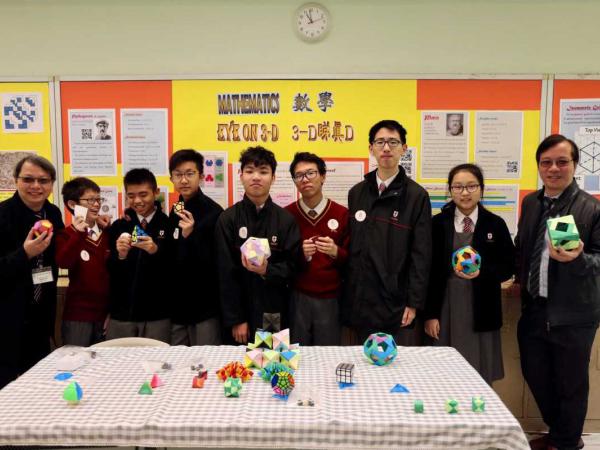Curriculum Objectives
To develop students’ abilities to
- Think critically and creatively, to conceptualize, inquire and reason mathematically;
- Use mathematics to formulae and solve problems in daily life and other disciplines;
- Communicate with others, express their views clearly and logically in mathematical language;
- Manipulate numbers, symbols and other mathematical objects;
- Build up a positive attitude towards mathematics learning and an appreciation of the aesthetic nature and cultural aspect of mathematics.
Curriculum Content
1. The content of core mathematics is organized into three strands. They are “Number and Algebra”, “Measures, Shape and Space” and “Data Handling”.
2. For junior form, the learning units of the three strands are listed below.
2.1 Number and Algebra
- Directed numbers, rational and irrational numbers
- Approximation and estimation
- Percentages
- Rates, ratios and proportions
- Algebraic expressions and polynomials
- Linear equations and inequalities
- Laws of integral indices
- Identities and formulae
- Linear inequalities
2.2 Measures, Shape and Space
- Geometry such as similar and congruent triangles, polygons and quadrilateral
- Pythagoras’ theorem
- Mensuration
- Trigonometry
- Rectangular coordinate system
2.3 Data Handling
- Organization and presentation of data
Measures of central tendency
Probability
Pythagoras’ theorem
Mensuration
3. For senior form, the learning units of the three strands are listed below.
3.1 Number and Algebra
- Quadratic equations
- Functions and graphs
- Exponential and logarithmic functions
- More about polynomials and equations
- Variations
- Arithmetic and geometric sequences and series
- Inequalities and linear programming
3.2 Measures, Shape and Space
- Equations of straight lines and circles
- Properties of circles
- Loci
- More about trigonometry and its applications
3.3 Data Handling
- Permutations and combinations
- More about probability
- Measures of dispersion
- Use and abuses of statistics
4. For the extended part Module 1 (Calculus and Statistics) , the learning units are grouped under three areas:
- Foundation knowledge such as binomial expansion
- Calculus such as differentiation and integration
- Statistics such as probability distribution and normal distribution
5. For the extended part Module 2 (Algebra and Calculus) , the learning units are grouped under three areas:
- Foundation knowledge such as mathematical induction and more about trigonometric functions
- Algebra such as vectors, determinants and matrices
- Calculus such as limits, differentiation and integration





